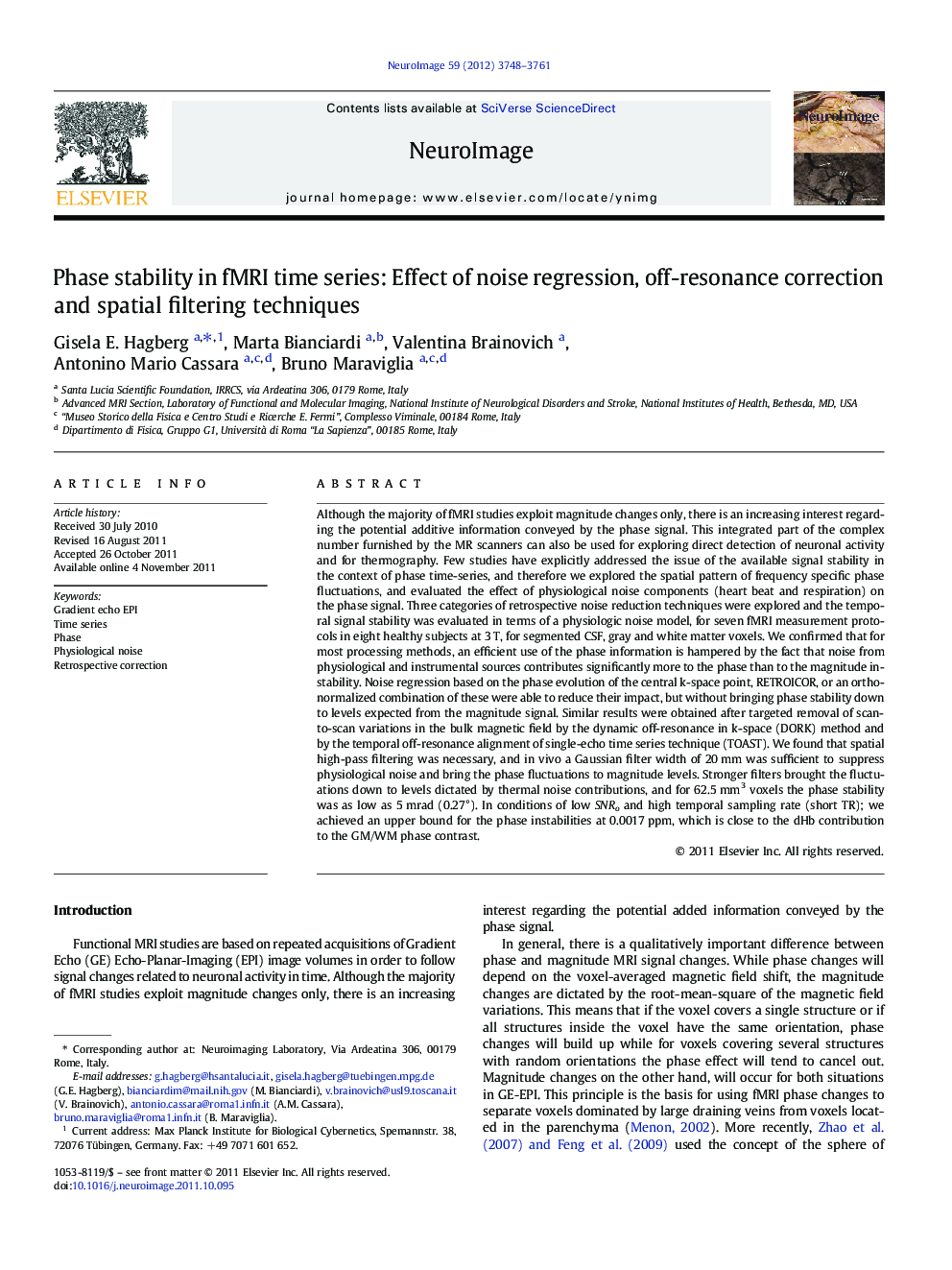| کد مقاله | کد نشریه | سال انتشار | مقاله انگلیسی | نسخه تمام متن |
|---|---|---|---|---|
| 6032804 | 1188742 | 2012 | 14 صفحه PDF | دانلود رایگان |

Although the majority of fMRI studies exploit magnitude changes only, there is an increasing interest regarding the potential additive information conveyed by the phase signal. This integrated part of the complex number furnished by the MR scanners can also be used for exploring direct detection of neuronal activity and for thermography. Few studies have explicitly addressed the issue of the available signal stability in the context of phase time-series, and therefore we explored the spatial pattern of frequency specific phase fluctuations, and evaluated the effect of physiological noise components (heart beat and respiration) on the phase signal. Three categories of retrospective noise reduction techniques were explored and the temporal signal stability was evaluated in terms of a physiologic noise model, for seven fMRI measurement protocols in eight healthy subjects at 3 T, for segmented CSF, gray and white matter voxels. We confirmed that for most processing methods, an efficient use of the phase information is hampered by the fact that noise from physiological and instrumental sources contributes significantly more to the phase than to the magnitude instability. Noise regression based on the phase evolution of the central k-space point, RETROICOR, or an orthonormalized combination of these were able to reduce their impact, but without bringing phase stability down to levels expected from the magnitude signal. Similar results were obtained after targeted removal of scan-to-scan variations in the bulk magnetic field by the dynamic off-resonance in k-space (DORK) method and by the temporal off-resonance alignment of single-echo time series technique (TOAST). We found that spatial high-pass filtering was necessary, and in vivo a Gaussian filter width of 20 mm was sufficient to suppress physiological noise and bring the phase fluctuations to magnitude levels. Stronger filters brought the fluctuations down to levels dictated by thermal noise contributions, and for 62.5 mm3 voxels the phase stability was as low as 5 mrad (0.27°). In conditions of low SNRo and high temporal sampling rate (short TR); we achieved an upper bound for the phase instabilities at 0.0017 ppm, which is close to the dHb contribution to the GM/WM phase contrast.
⺠Noise of the phase signal in EPI time series has specific spatiotemporal characteristics. ⺠Phase noise is mainly caused by respiration, heart-beat and scanner instabilities. ⺠Prior knowledge of physiology reduces noise but to a limited extent. ⺠Spatial high-pass filters efficiently remove low-spatial frequency phase noise. ⺠Results may improve phase based fMRI, ncMRI and thermography.
Journal: NeuroImage - Volume 59, Issue 4, 15 February 2012, Pages 3748-3761